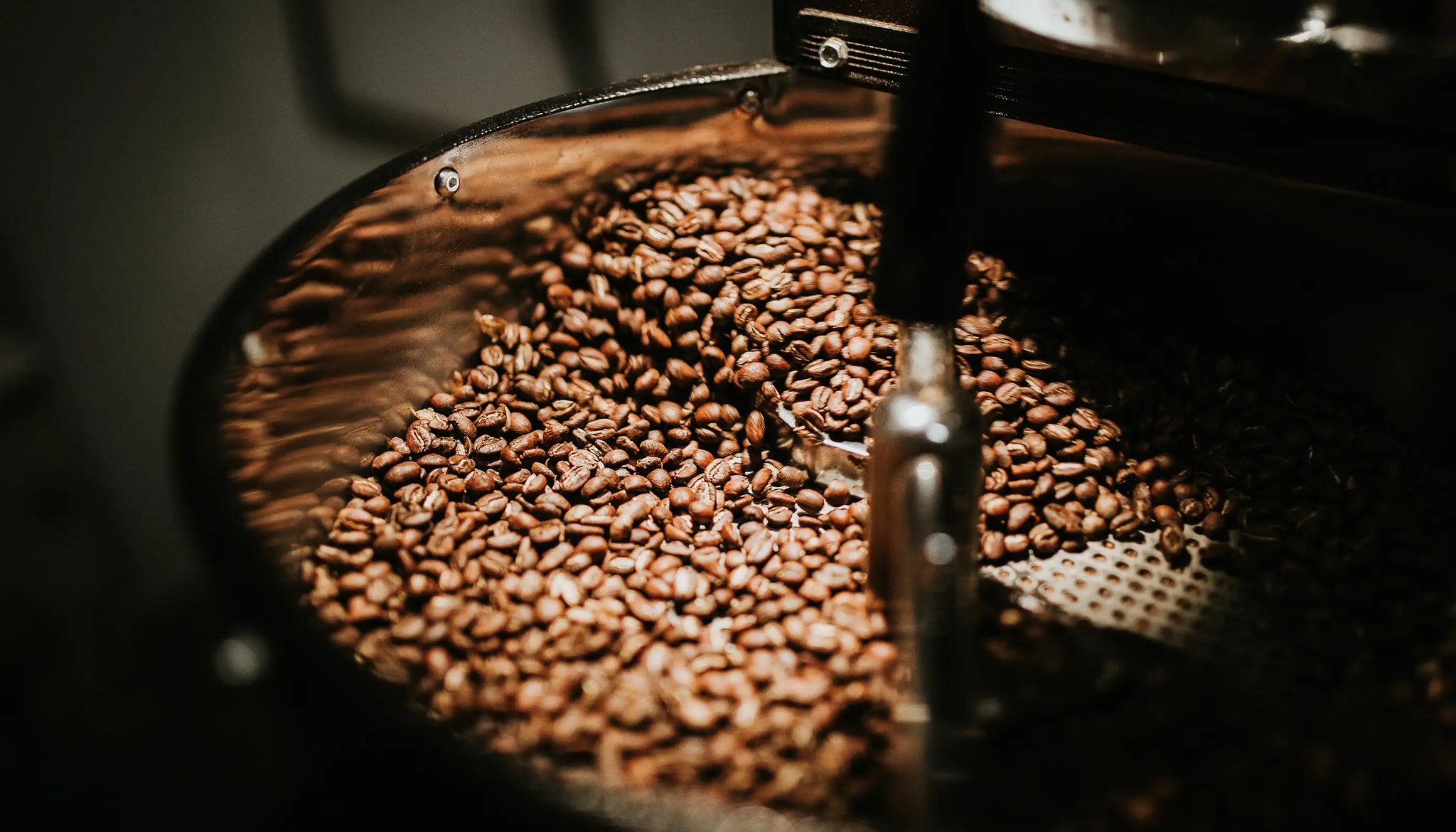SOE Single Origin Espresso – Ideal for Precision Brewing Methods
SOE Single Origin Espresso – Ideal for Precision Brewing Methods
Blog Article
Recognizing Coffee Beans: the Journey From Coffee to Blended Coffee Beans

The Beginnings of Coffee: An International Perspective
While you may believe of coffee as a modern-day staple, its origins trace back centuries, linking with cultures throughout the world. The story starts in Ethiopia, where legend says a goat herdsman named Kaldi discovered the stimulating results of coffee beans after noticing his goats romping energetically after consuming them.
As profession courses increased, coffee made its way to Europe in the 17th century, swiftly obtaining appeal. Each society included its one-of-a-kind spin to coffee prep work, enriching its background.
Growing and Harvesting of Espresso Beans
As coffee's journey progressed, the focus changed to the cultivation and harvesting of specific bean selections, specifically those made use of for espresso. You'll discover that coffee beans typically come from Arabica or Robusta plants, each offering unique tastes. The excellent expanding problems include high altitudes and abundant, well-drained dirt, which improve the beans' high quality.
During the harvest, picking methods differ. In some areas, workers hand-pick ripe cherries, making certain just the very best fruit goes to handling. In various other areas, mechanical harvesters are utilized, especially on larger ranches. Timing is important; you intend to gather when the cherries reach peak ripeness for optimum flavor.
As soon as gathered, the beans are prepared for handling, which is crucial in establishing their last taste. Understanding the growing and harvesting procedures provides you insight into what enters into your favored espresso, enriching your gratitude for every mug.
Handling Approaches: From Cherry to Bean
Since you've learnt more about harvesting coffee beans, let's check out just how those cherries change into the coffee beans you enjoy. You'll see exactly how various harvesting techniques influence flavor, complied with by the crucial actions of fermentation and drying out. Lastly, we'll break down the milling and grading process that identifies your coffee's top quality.
Harvesting Methods Explained
When it comes to coffee, understanding harvesting methods is crucial, since they directly affect the taste and quality of the beans you enjoy. Selective picking involves hand-picking just ripe cherries, guaranteeing you obtain the ideal quality beans. Inevitably, the choice of harvesting technique can considerably affect your coffee experience, so it's worth recognizing just how those beans made it to your mug.
Fermentation and Drying
After harvesting, the next action in handling coffee beans play a considerable role fit their taste. You'll find that fermentation is crucial, as it aids break down the mucilage surrounding the beans, enhancing their taste account. Depending on the approach, this process can last from a couple of hours to numerous days, with differing results based upon temperature and humidity.
As soon as fermentation is total, drying follows, which is just as crucial. You can pick from sun-drying or mechanical drying out techniques. Sun-drying allows the beans to soak up flavors from the environment, while mechanical drying out assurances consistent dampness levels no matter weather condition. Correct drying is important to prevent mold and mildew and preserve the beans' high quality, ultimately affecting your cup of coffee.
Milling and Grading Process
As fermentation and drying out established the stage for taste growth, the milling and grading process warranties that just the finest coffee beans make it to your mug. This stage includes getting rid of the outer layers of the coffee cherry, consisting of the parchment and husk. After milling, the beans are sorted by dimension and weight, making certain an uniform top quality. You'll discover that grading helps identify flaws and categorize beans, which influences flavor and fragrance. High-quality beans get a greater grade, resulting in a richer coffee experience. As soon as graded, the beans await packaging and shipping, protecting their one-of-a-kind characteristics. This precise process is essential for providing the exceptional taste you enjoy in every sip of your preferred mixture.
Roasting Strategies: Unlocking Flavor Potential
When you roast coffee beans, the technique you select can significantly influence the flavor profile. Understanding Click This Link the partnership in between time, temperature, and toasting methods is key to revealing the possibility of your mixture. Let's explore just how these elements integrated to develop the perfect cup.
Roasting Approaches Clarified
While you may think that all coffee toasting methods produce the very same results, the fact is that each technique exposes unique taste possibilities in the beans. Drum roasting makes use of a rotating drum to evenly distribute warm, enhancing caramelization and creating a well balanced flavor. Air roasting, on the various other hand, distributes hot air around the beans, advertising a lighter roast with noticable acidity.

Influence On Taste Profile
Different toasting techniques not only influence the procedure but also considerably impact the flavor profile of the coffee beans. Dark roasts, on the other hand, bring out bold, smoky tastes, sometimes masking the bean's distinct qualities. Understanding these nuances helps you value the virtuosity behind your mug of coffee, boosting your total experience with every sip.
Time and Temperature Level Factors
To release the full taste potential of coffee beans, both time and temperature during the toasting procedure play significant functions. When roasting, you'll locate that higher temperature levels can quickly establish flavors, yet if you rush it, you could finish up with scorched notes. On the other hand, reduced temperatures permit a much more gradual flavor growth, showcasing the beans' special qualities.

Timing is just as important; prolonging the roast too long can bring about a loss of acidity and illumination, while as well brief a roast might leave the beans underdeveloped. Finding that sweet area requires websites technique and trial and error. By readjusting these elements, you can disclose the rich, complicated tastes hidden within each bean, producing a truly exceptional coffee experience.
The Art of Mixing: Crafting Unique Coffee Profiles

Start by selecting a base coffee that provides a solid structure. An intense Ethiopian bean can bring fruitiness, while a rich Brazilian coffee includes body.
As you mix, keep in mind that each combination informs a story. You're not simply making coffee; you're developing an experience. Take your time, taste frequently, and delight in the journey of discovering your signature mix - Single Origin Espresso.
Brewing Methods: Just How Prep Work Influences Taste
Mixing coffee opens a domain name of taste possibilities, but how you make that blend can considerably affect your last mug. Various developing approaches remove unique tastes and fragrances, so it's crucial to pick intelligently. For circumstances, a French press enables oils and sediments to remain, creating an abundant, robust experience. On the other hand, a pour-over highlights the coffee's quality and illumination, perfect for showcasing fragile notes.
Coffee, with its high pressure, creates a concentrated shot that emphasizes sweet taste and crema. If you prefer a lighter mixture, think about a cool brew approach; it generates a smooth, less acidic preference.
Changing variables like water temperature level, grind dimension, and make time can transform your coffee's profile. Welcome the art of brewing to discover the tastes concealed in your coffee blends.
The Future of Coffee: Sustainability and Development
As the coffee sector develops, sustainability and advancement are becoming necessary for dealing with ecological obstacles and meeting consumer needs. You'll see that more coffee companies are embracing environmentally friendly techniques, from sourcing beans ethically to carrying out lasting farming techniques. These changes not just help the world yet also improve the top quality of the coffee you take pleasure in.
You could see advancements like eco-friendly packaging and water-saving brewing methods that minimize waste. Advanced modern technology, such as blockchain, is likewise ending up being get redirected here prominent, guaranteeing openness in the supply chain, which permits you to trace your coffee back to its beginnings.
Additionally, investing in local neighborhoods and sustaining farmers with fair trade efforts promotes an extra lasting coffee environment. As you drink your following cup, keep in mind that your options can contribute to a brighter future for coffee. By choosing sustainable brand names, you're not simply appreciating a drink; you're making a favorable effect on the world.
Frequently Asked Inquiries
What Is the Distinction Between Arabica and Robusta Beans?
Arabica beans are smoother, sweeter, and have a greater level of acidity, while robusta beans are stronger, more bitter, and have even more caffeine. When brewing your coffee., you'll notice these distinctions in flavor and aroma.
Just How Does Elevation Affect Coffee Bean Flavor?
Altitude influences coffee bean taste significantly. Higher elevations produce beans with brighter level of acidity and complicated tastes, while lower altitudes frequently yield beans that are heavier and less nuanced. You'll see these distinctions in your mug!
What Are the Health Perks of Alcohol Consumption Coffee?
Consuming coffee can enhance your power, boost mental emphasis, and even boost physical performance. It's abundant in antioxidants, might reduce the threat of specific conditions, and can promote a much healthier metabolic process when consumed in moderation.
Can Coffee Beans Be Recycled for Brewing?
Yes, you can reuse coffee beans for developing, however the taste could be weak. If you enjoy exploring, try recycling them in different methods, like cold brews or contributing to healthy smoothies for an added kick.
How Should I Store Coffee Beans for Quality?
To maintain your coffee beans fresh, store them in a closed container in a cool, dark location. Prevent exposing them to light, heat, or wetness, as these variables can promptly deteriorate their flavor and fragrance.
Comprehending Coffee Beans: the Journey From Espresso to Blended Coffee Beans.
Now that you've discovered regarding gathering coffee beans, allow's check out exactly how those cherries change into the coffee beans you like.When you roast coffee beans, the technique you select can dramatically impact the flavor profile - Single Origin Espresso.While you might think that all coffee roasting methods generate the very same outcomes, the reality is that each method exposes special flavor capacities in the beans.Different roasting methods not only influence the process however likewise considerably impact the flavor profile of the coffee beans
Report this page